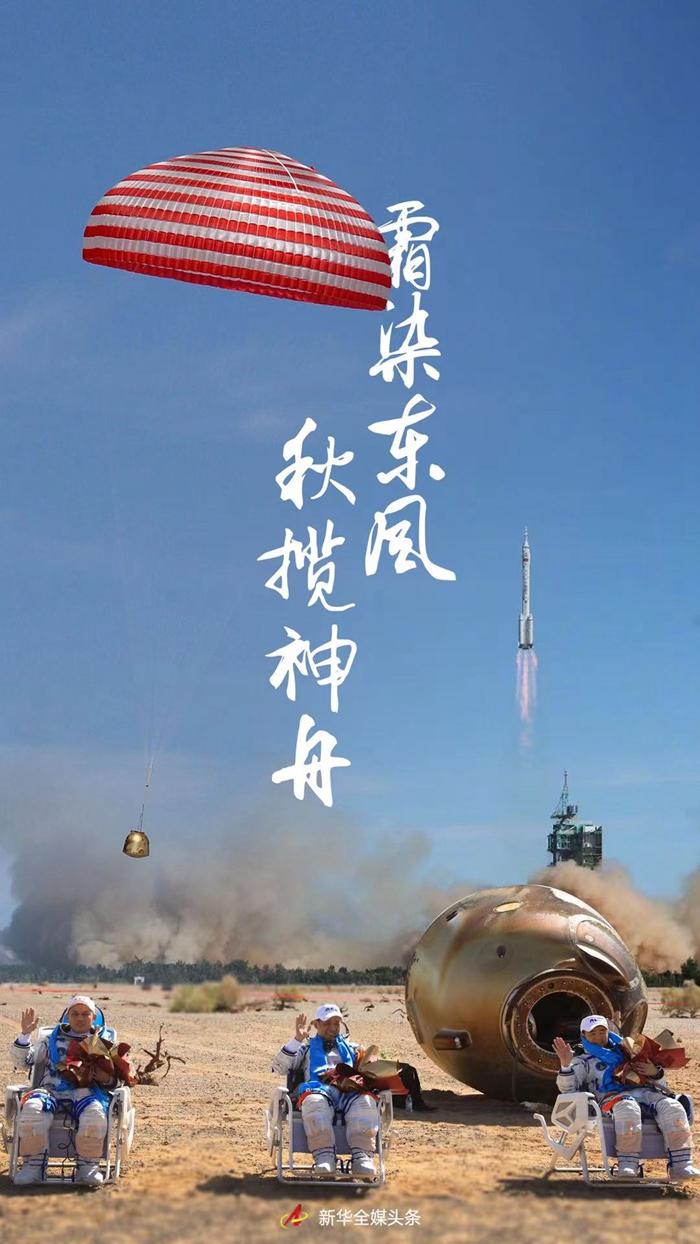Xinhua News Agency, Jiuquan, September 17th, title: Frost stains the east wind, and the autumn takes the Shenzhou-the full record of the Shenzhou 12 manned spacecraft
The day home is always full of sunshine, and even the stones in the Gobi desert are stained with frost.
When the first ray of sunlight poured into the Dongfeng landing field, the roar of the engine awakened the silent wasteland.
At 13:34 on September 17, Beijing time, the return module of the Shenzhou 12 manned spacecraft successfully landed in the scheduled area of the Dongfeng landing site. The astronauts Nie Haisheng, Liu Boming, and Tang Hongbo who performed the mission safely exited the capsule and were in good physical condition. The first flight of China’s manned space station ended perfectly.
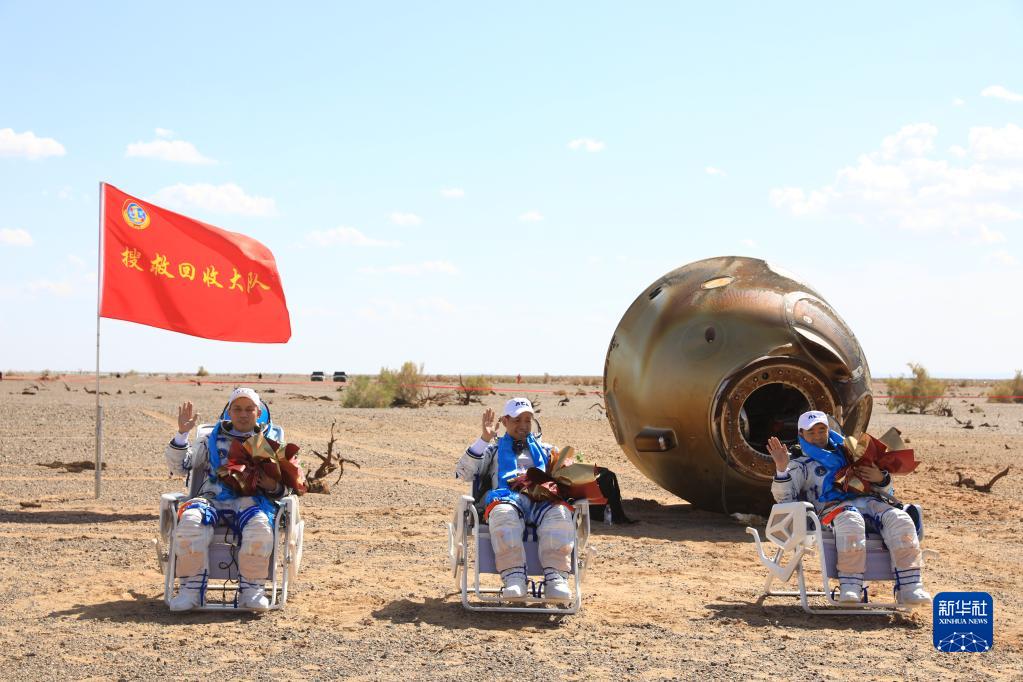
On September 17, the return capsule of the Shenzhou 12 manned spacecraft successfully landed at the Dongfeng landing site. This is the safe and smooth exit of astronauts Nie Haisheng (middle), Liu Boming (right) and Tang Hongbo.Photo by Xinhua News Agency reporter Ju Zhenhua
Three months ago, the Shenzhou 12 manned spacecraft took off from Dongfeng Aerospace City and sent three astronauts into space.
Three months later, the golden Gobi took Shenzhou into his arms again.
The autumn scenery is just right, and Populus euphratica is becoming yellow, and China’s manned spaceflight industry has taken a sonorous pace in a new stage.
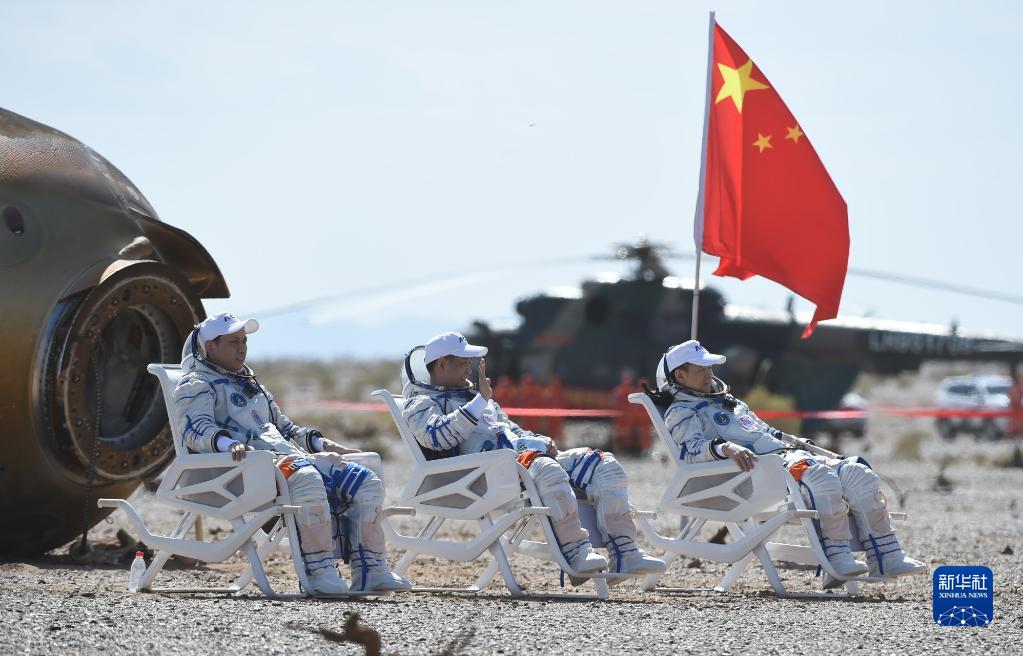
On September 17, the return capsule of the Shenzhou 12 manned spacecraft successfully landed at the Dongfeng landing site. This is the safe and smooth exit of astronauts Nie Haisheng (middle), Liu Boming (right) and Tang Hongbo.Xinhua News Agency reporter Lian Zhenshe
Leaping is a kind of courage
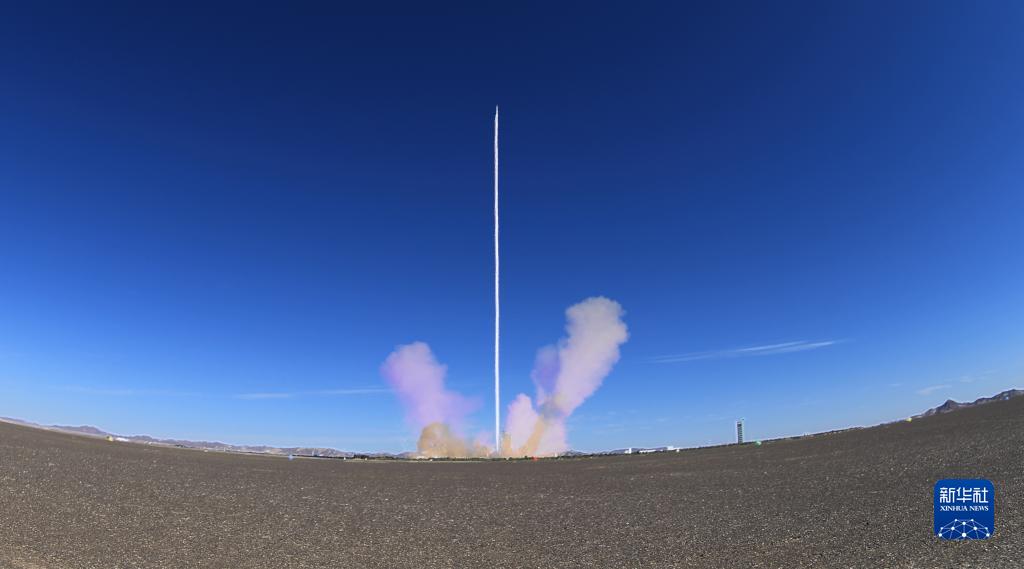
At 9:22 on June 17, the Long March 2 F Yao 12 carrier rocket carrying the Shenzhou 12 manned spacecraft was ignited and launched on time at the Jiuquan Satellite Launch Center. About 573 seconds later, the Shenzhou 12 manned spacecraft and the The rocket successfully separated and entered the predetermined orbit, and successfully sent the three astronauts Nie Haisheng, Liu Boming, and Tang Hongbo into space. The flight crew was in good condition and the launch was a complete success (multi-image synthesis).Photo by Xinhua News Agency reporter Ju Zhenhua
On June 17, also such a sunny day, the Long March 2 F Yao 12 carrier rocket carried the Shenzhou 12 spacecraft and ignited at the Jiuquan Satellite Launch Center.
That day, a photographer captured that magnificent moment with a long exposure-the god arrow lifted the god boat, drawing a very beautiful arc on the blue sky, disappearing outside the atmosphere.
This is a new height for China’s aerospace industry. The first manned mission of China’s manned space station stage began.
The construction of a space station and the establishment of a national space laboratory are important goals for realizing the “three-step” strategy of my country’s manned spaceflight project, and an important leading project for building a powerful country in science and technology and aerospace. Looking back on the road to flying, every lift-off, every flight, and every landing of the Shenzhou series of spacecrafts are all made brilliant amid hardships and achieved leaps in challenges——
On September 21, 1992, China’s manned spaceflight project was officially launched, code-named “Project 921”.
At that time, the world‘s major aerospace powers have been in this field for more than 30 years: the third-generation spacecraft developed by the Soviet Union has been launched and two space stations have been built; the United States has completed the leap from spacecraft to space shuttle.
Faced with so many pressures, China’s manned spaceflight started from scratch.
On November 20, 1999, at the Jiuquan Satellite Launch Center, the Shenzhou-1 unmanned spacecraft opened the curtain of China’s manned spaceflight under the lift of the Long March rocket. In just 7 years, the Chinese astronauts have completed the journey that developed countries have traversed in 30 to 40 years.
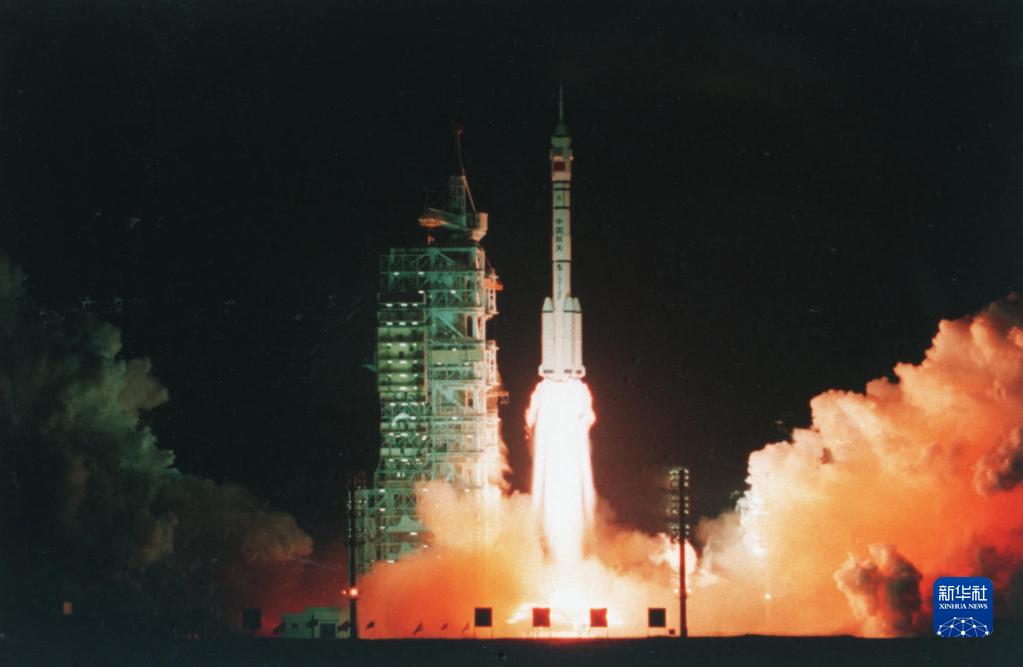
On November 20, 1999, the Shenzhou-1 unmanned spacecraft was launched from the Jiuquan Satellite Launch Center.Xinhua News Agency
Some western media commented: China has become one of the world‘s largest aerospace powers overnight.
From unmanned flight to manned flight, from one person for one day to multiple people for multiple days, from in-cabin experiments to spacewalks, from single-vessel flight to stable operation of composites… China’s manned spaceflight industry is advancing one step at a time toward the established goal. In a relatively short period of time, with less investment, high standards, high quality, and high efficiency, a manned space project with Chinese characteristics has been developed.
“Attention, I am Beijing, the spacecraft turned 200 meters and maintained, the state is normal, the state of the sky and the core module is normal before the docking, continue to implement the rendezvous and docking.”
Just 6.5 hours after the launch of Shenzhou 12, the spacecraft adopted the autonomous rapid rendezvous and docking mode and successfully docked at the forward port of the Tianhe core cabin, forming a three-cabin (ship) combination with the previously docked Tianzhou-2 cargo spacecraft. .
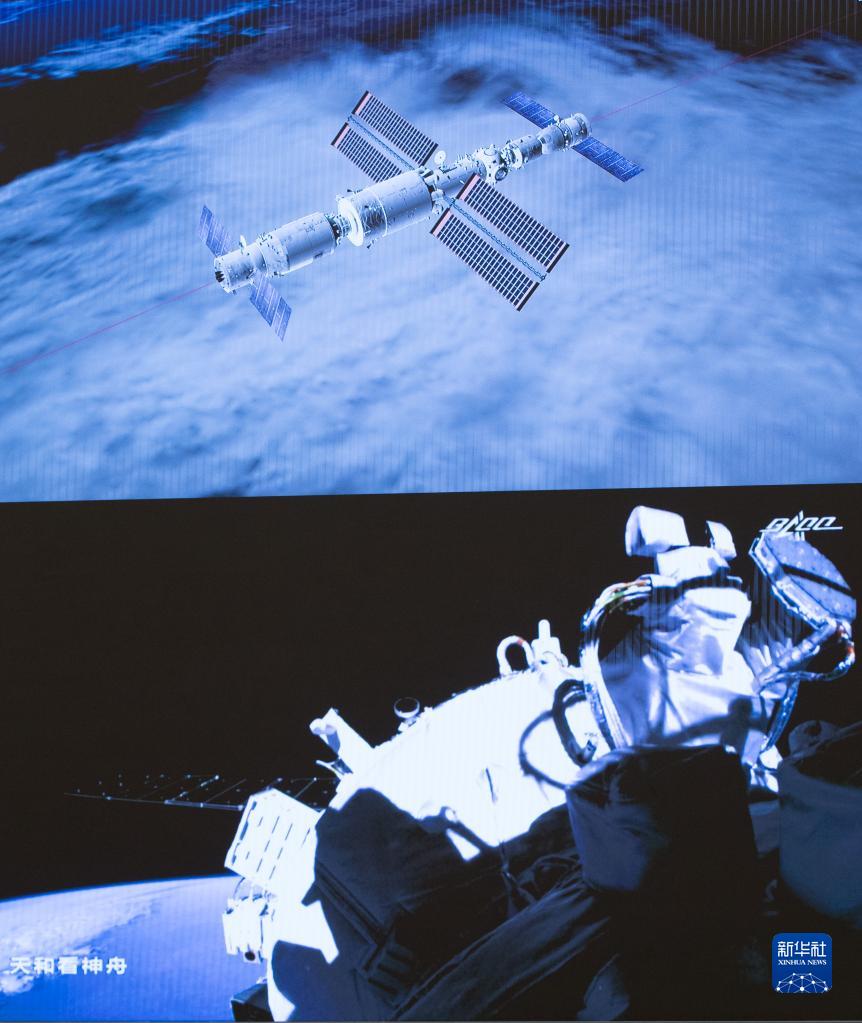
This is a picture of the successful autonomous rapid rendezvous and docking of the Shenzhou 12 manned spacecraft and the Tianhe core module taken at the Beijing Aerospace Flight Control Center on June 17. Ship) combination.Photo by Xinhua News Agency reporter Jin Liwang
Previously, the rendezvous and docking of the Shenzhou-8 to Shenzhou-11 spacecraft with Tiangong-1 and Tiangong-2 usually took about two days. From two days to 6.5 hours, some media likened it to “upgrading from a green train to a high-speed train.”
During the Shenzhou 12 flight mission, Nie Haisheng, who flew three times, and Liu Boming, who knocked the sky again, and Tang Hongbo, who made the first space expedition, successfully entered the Tianhe core module and became the first batch of owners to enter the Chinese space station.
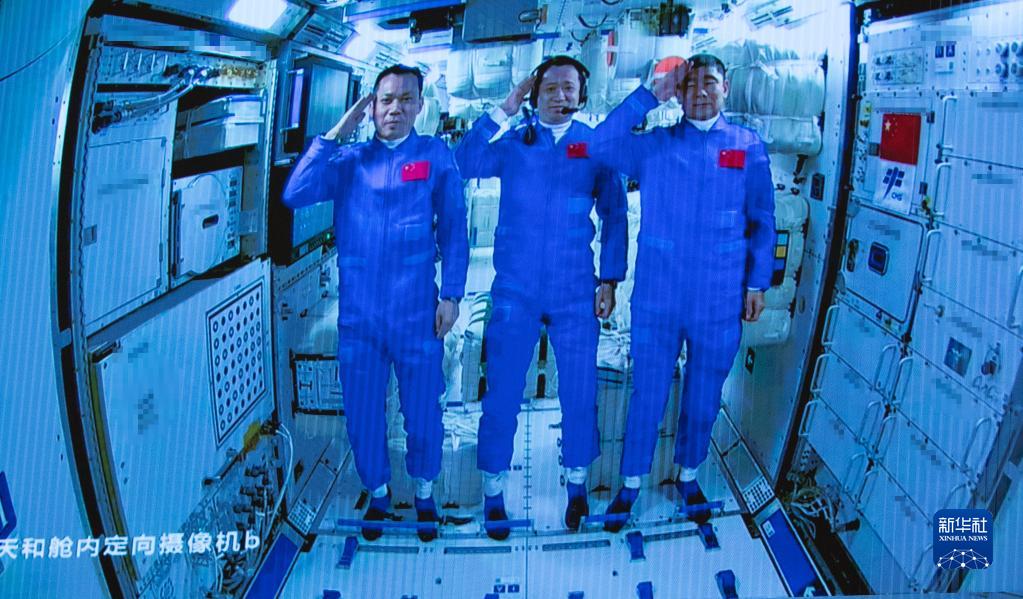
This is a picture of astronauts Nie Haisheng, Liu Boming, and Tang Hongbo who are stationed in the Tianhe core module, taken at the Beijing Aerospace Flight Control Center on June 17 to salute the people of the whole country.Photo by Xinhua News Agency reporter Jin Liwang
Short-time and high-efficiency rendezvous and docking have greatly improved the flight experience of astronauts. The fully autonomous rendezvous and docking mode has also greatly reduced the workload and working time of ground flight controllers.
This is just a small aspect of the innovative breakthrough of Shenzhou 12. In order to meet the emergency rescue needs of the astronauts during their stay in orbit, the Chang-2F rocket system has undergone 108 technical status changes, and a fault detection and escape system has been added to ensure the safety of the astronauts during the launch process.
The emergency rescue standard of the Shenzhou 12 spacecraft system has also been further improved. When the ship-arrow combination is ready to launch at the launch tower, another ground standby rescue spacecraft has also completed the preparation before propellant filling, and the subsequent launching procedures can be started at any time. .
There are more than 100 changes in the state of the launch site system and the measurement and control communication system technology to meet the needs of emergency launch and rescue capabilities.
Because the stay in orbit will be longer and longer, the requirements for astronaut selection and training will increase significantly. Emergency rescuers, active evacuation, active rescue, waiting for assistance, troubleshooting… Astronauts need to receive more training subjects and content, and the difficulty is even greater, reaching an average of more than 6000 hours.
On the road to conquering the universe, challenges will always exist and innovation will never end. Chinese astronauts are working hard to write a new chapter in the “Chinese-style leapfrogging” in the world‘s aerospace history.
Dream achievement glory
At 8:56 on September 16, 2021, Beijing time, the Shenzhou 12 manned spacecraft was successfully separated from the space station’s sky and core module.
From summer to autumn, the crew of the Shenzhou 12 astronauts has worked and lived in the space station complex for 90 days, setting a record for Chinese astronauts’ space residence time in a single mission.
This is another brand new scale for China Aerospace.
In the past three months, Shenzhou 12 has completed a series of tasks such as on-orbit assembly and construction, maintenance and repair, extravehicular operations, space applications, scientific experiments, and space station monitoring and management to further verify the functional performance of the manned space-to-earth transportation system. Comprehensive verification of astronauts’ long-term stay guarantee technology, and on-orbit verification of the ability of astronauts and robotic arms to complete out-of-vehicle activities and out-of-vehicle operations.
In the 90 days, the work and life of the “Space Travel Trio” showed the people on the ground a space full of romance and fantasy.
Sky survey Tai Chi, chopsticks holding tea, space spinning bike, space station folding kitchen… A series of novel and interesting “space details” bring the distant and mysterious deep space closer to ordinary people.
If it is said that the soaring into the sky that year was the “dream-making” journey of ancient China’s thousand-year flying dream, then this time the first expedition to the Chinese space station is a “dream-making” journey that ignites the yearning for space in the new season.
“Wow, this is so beautiful outside!” Opening the cabin door, looking at the universe, this was the first sigh that Liu Boming made when he got out of the cabin. On July 4, the first out-of-vehicle activity of the Chinese space station stage was successfully implemented. Before a series of technical challenges and breakthroughs, the first thing that strikes us is the dreamlike beauty that space brings to mankind.
The light of technology, the beauty of space. Liu Boming recalled that it’s not enough to describe that beauty as being beautiful. Looking at the sky from afar, it is like a rainbow after the rain. The moon is in the left hand, which is the only natural satellite of the earth, soft and beautiful; the right hand is the sun that has just risen. It is the source of energy that nourishes everything, and it shines brightly.
This is the first time that 13 years have passed since the Shenzhou VII astronaut Zhai Zhigang exited the capsule for the first time, the Chinese astronauts once again exited the capsule, which lasted about 7 hours, and once again printed their footprints in the bare deep space.
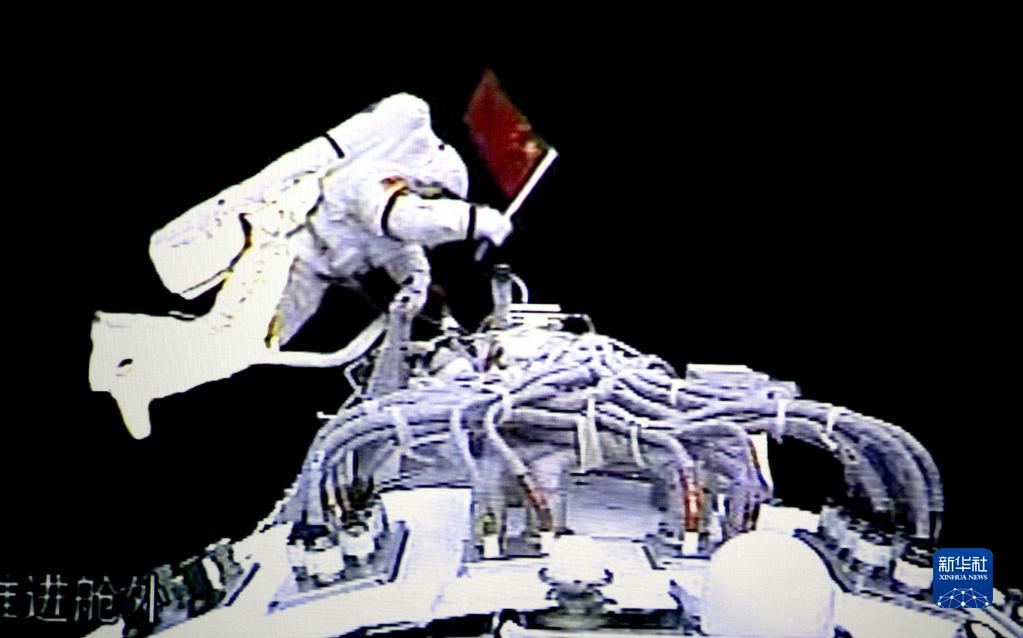
On September 27, 2008, astronaut Zhai Zhigang, who performed the mission of the Shenzhou-7 manned space flight, waved the Chinese national flag after exiting the capsule (photographed on the big screen of the Beijing Aerospace Flight Control Center).Photo by Xinhua News Agency reporter Cha Chunming
On August 20th, the Shenzhou 12 astronaut crew successfully completed the second out-of-vehicle activity, further testing the functional performance of my country’s new generation of extravehicular spacesuits, as well as the ability of astronauts and robotic arms to work together and exit the capsule. Reliability and safety of event-related support equipment.
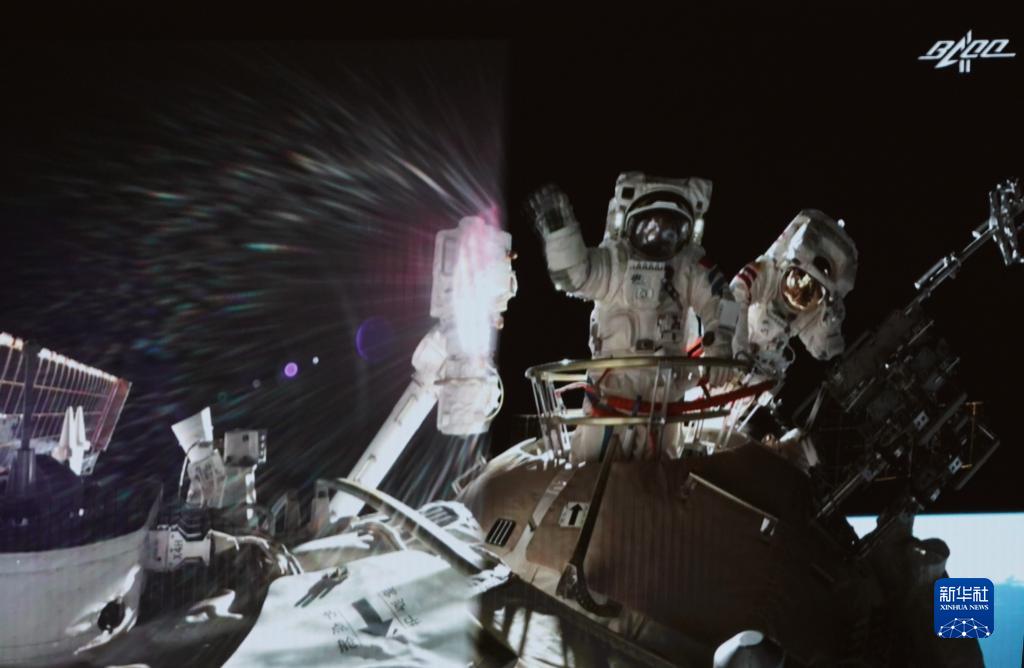
The Shenzhou 12 crew astronauts Nie Haisheng and Liu Boming, taken on the large screen of the Beijing Aerospace Flight Control Center on August 20, waved after the exit mission.Photo by Xinhua News Agency reporter Tian Dingyu
Compared with Shenzhou VII, Shenzhou 12’s mission to exit the cabin has increased several times in length, difficulty, and workload. The Chinese astronauts have made the “space walk” solid. In the second out of the cabin, the astronauts completed the extravehicular activity even one hour earlier than originally planned.
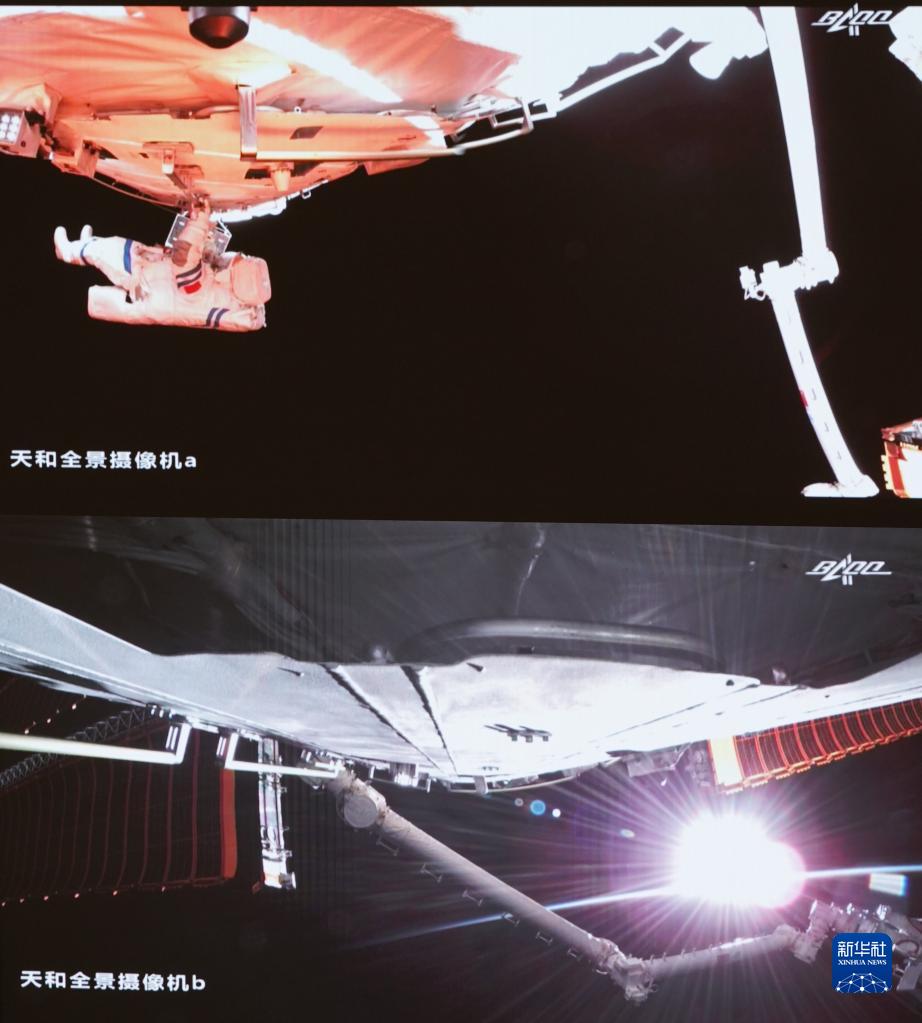
On August 20, the Shenzhou XII crew crew working outside the cabin were taken on the big screen of the Beijing Aerospace Flight Control Center.Photo by Xinhua News Agency reporter Tian Dingyu
Dreams are seeds. They need to be watered with sweat and need to be cultivated day after day. Before the expedition, astronaut Nie Haisheng once talked to reporters about the state of training: “I only took a 3-day vacation during the Spring Festival, and the rest of the time was fully arranged from morning to night.” “Wearing an underwater training suit, there are several training sessions. For hours, when I was hungry and thirsty, I could only drink saliva. I could only endure the sweat on my face and any itching and pain on my body. After training, I was so tired and sweaty that I couldn’t eat any food.”
It is precisely with this spirit of “particularly able to endure hardships” that Chinese astronauts continue to climb the ladder of ascending to the sky, marking one leaps beyond dreams in the vast space.
On September 3, the “Looking up to the Stars and Talking to the Heavenly Palace” event of “The Spirit of the Times” kicked off in Beijing and Hong Kong. In the much-anticipated “highlight”-Tiandi Connection Interaction, the astronauts combined this experience with their Together with the space experience, it will be brought to the children of the Pearl of the Orient.
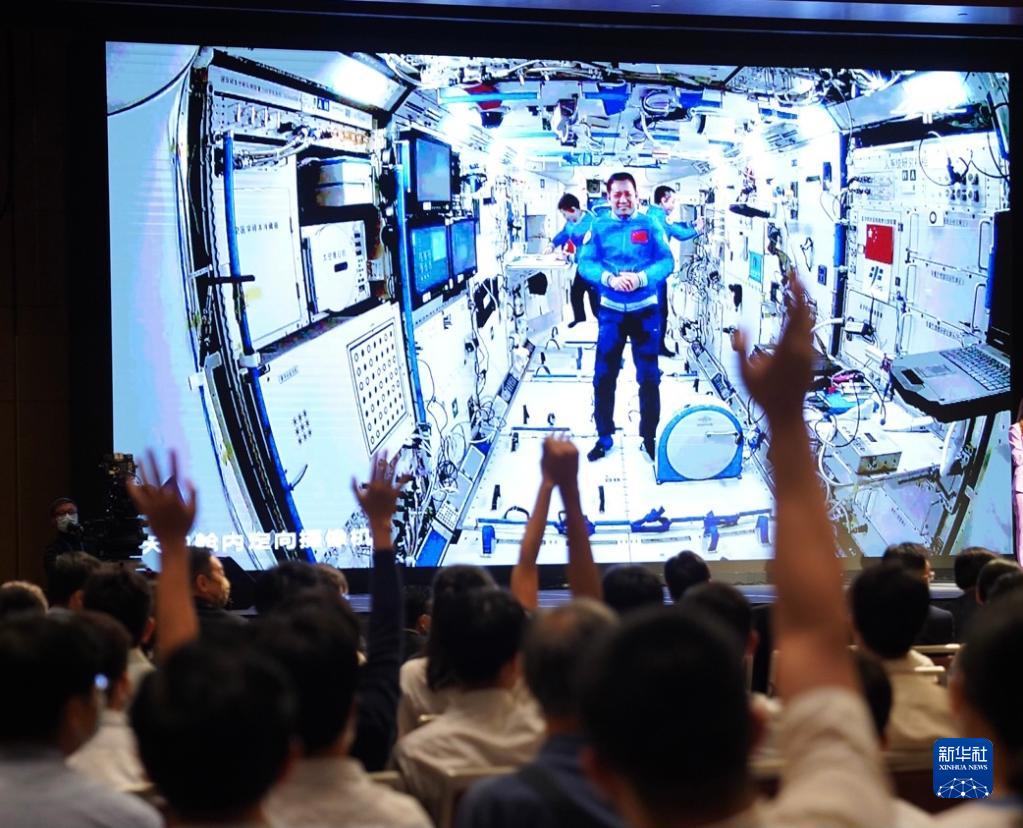
On September 3, the Shenzhou XII crew who was on mission at the Tiangong Space Station interacted with Hong Kong science and technology workers, teachers, and university and high school students.Photo by Xinhua News Agency reporter Lv Xiaowei
“The Chinese dream, the space dream, you and me.” Liu Boming said.
When personal dreams are connected with national dreams, they will be able to give off a dazzling light. Yang Liwei, who is now the deputy chief designer of China’s manned space project, said: “In space, when I showed the Chinese flag to the world, I thought I was the coolest at that moment.”
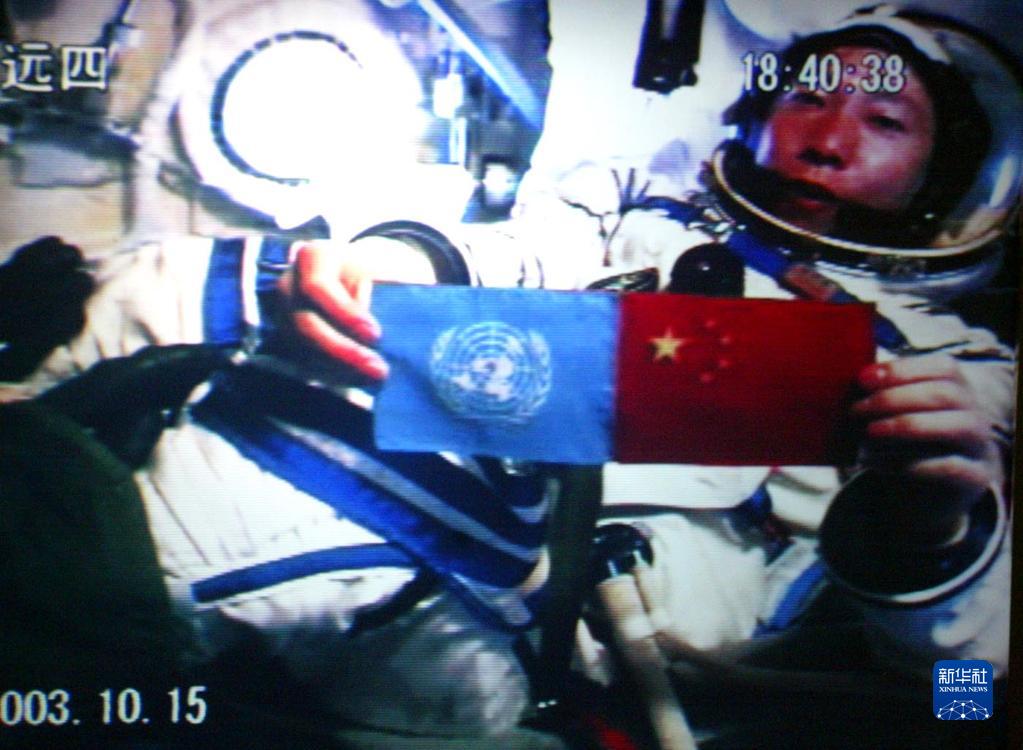
At 18:40 on October 15, 2003, Yang Liwei, the first astronaut trained by China, greeted the people of all countries from space, and displayed the five-star red flag and the United Nations flag side by side in the cabin (photographed on the large screen of Beijing Aerospace Command and Control Center) ).Xinhua News Agency
When the three astronauts blessed “Happy Birthday to the Great Communist Party of China” in unison in the space station, “you” and “me” were the coolest.
Brilliance comes from diligence
The day home is also the 55th birthday of astronaut Liu Boming.
At 12:43 on the 17th, Beijing Flight Control Center issued a return instruction through the ground measurement and control station, and the orbital module and return module of the Shenzhou 12 manned spacecraft were successfully separated.
Subsequently, the spacecraft returned to the brake engine to ignite, the return capsule and the propulsion capsule were separated, and the “space trio” officially embarked on the way home.
“The black barrier appeared in the return cabin”, another message came from the intercom. Radar operator Hu Changqing was the first to capture the target. After receiving the mission, he and his team worked hard for three months in the uninhabited desert hinterland to develop a pair of accurate capture “eagle eyes.”
Passing through the black barrier means that the spacecraft’s return module has completed the most difficult “journey” of the journey home, entered the atmosphere, and communication with the ground will be restored.
Under the attention of the public, the return capsule galloped towards the east wind landing field.
At 13:34, the return capsule landed in a predetermined area, and the landing point was almost perfect.
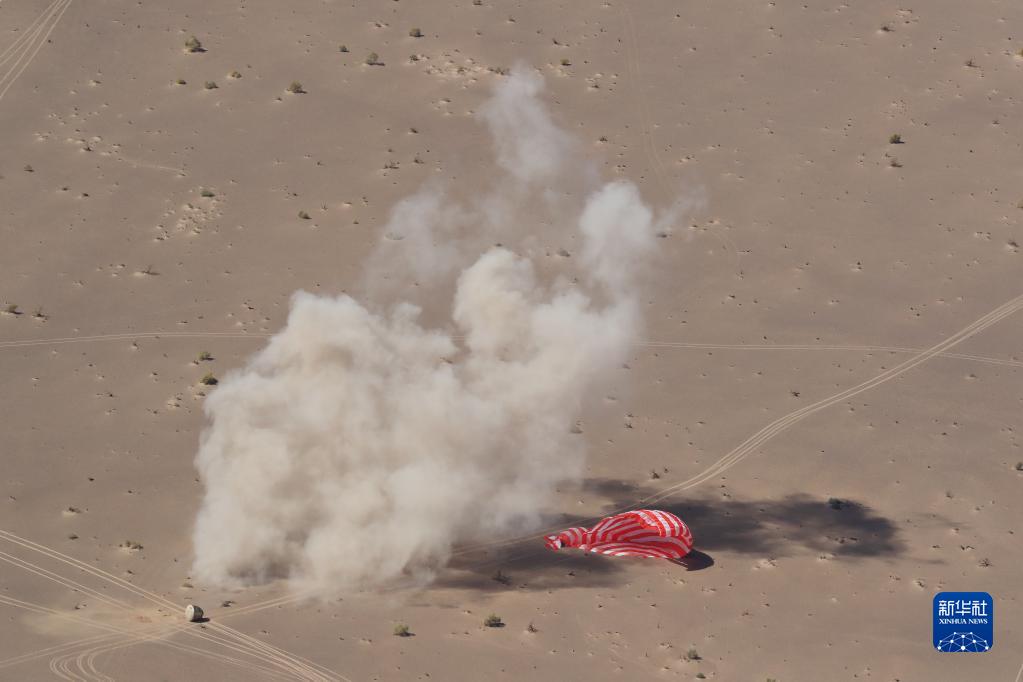
On September 17, the return capsule of the Shenzhou 12 manned spacecraft successfully landed at the Dongfeng landing site.Photo by Xinhua News Agency reporter Ju Zhenhua
This is the first manned spacecraft to meet at Dongfeng Landing Field. From then on, “Dongfeng” will serve as the home field and become the home port for the manned spacecraft to depart and return.
“To welcome the astronauts triumphantly in the most reliable, safest and warmest way!” To this goal, the landing field system has undergone more than 20 technical transformations, a multi-professional search and rescue force system has been constructed, and multiple batches of tactical deductions have been carried out. Training drills. In the desert and Gobi known as the “Sea of Death”, new roads have been blazed out.
“We must fully anticipate extreme conditions such as abnormal weather, abnormal regions, and abnormal information. If you think about the plan one more layer, the safety of the astronauts will increase.” said Bian Hancheng, deputy chief designer of the Dongfeng Landing Site.
The members of the search and rescue team “driving like a plow” conducted a comprehensive survey of the mountains, deserts, saline-alkali lands, haloxylon woodlands, and waters in the landing area, and compared different landforms with rain, snow, wind, sand, dust and other weather. Combining the phenomenon with different time periods at night and daytime, more than 30 key abnormalities in 6 categories that may affect the implementation of search and rescue missions have been identified.
Nearly half a hundred doctors in successive years have practiced the hard skills of helicopter landing. Once the terrain does not meet the conditions for helicopter landing, the doctors will land on the ground by rope landing like special forces.
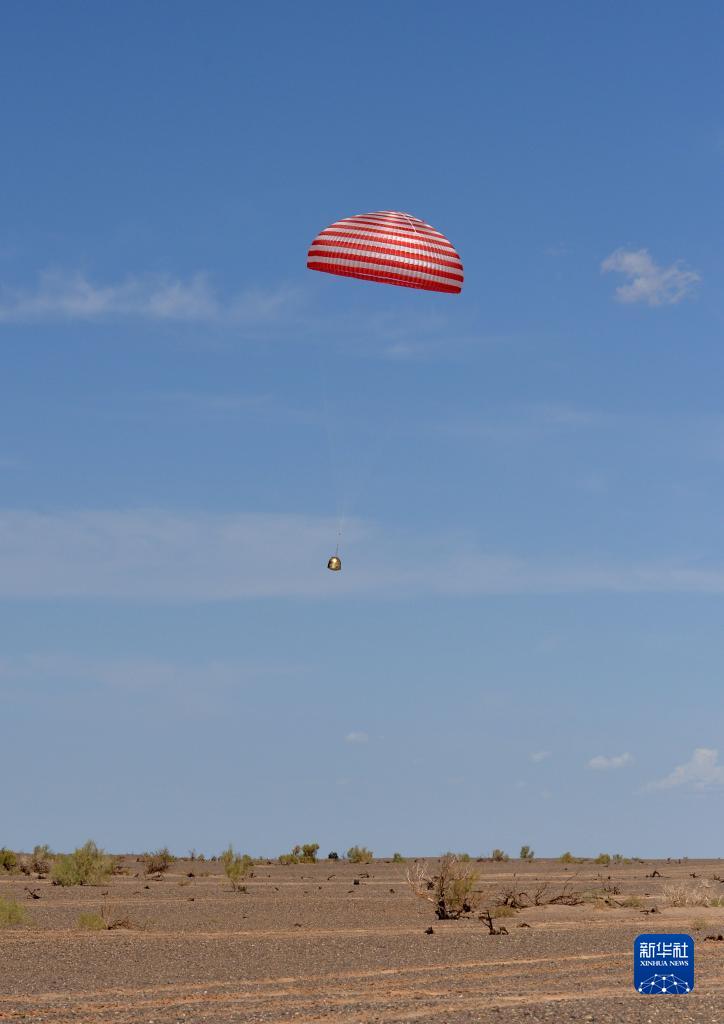
On September 17, the return capsule of the Shenzhou 12 manned spacecraft successfully landed at the Dongfeng landing site.Photo by Xinhua News Agency reporter Ren Junchuan
The cabin opener has conducted thousands of trainings, simulating the cabin doors and handles. The all-terrain vehicle driver turns over the sandy hills and down the meadow, and rushes straight down from the 300-meter-high sand slope…
“Everything is ready, foolproof”, “Prepare without use, use will win.” This is the case for the landing field system, but it is not the case for rockets, spacecraft, astronauts and other systems.
Few careers, like China’s manned space engineering, involve so many professions and fields. According to incomplete statistics, there are more than 110 institutes, bases, and research institutes directly involved in the research and development of manned space projects, and more than 3,000 units have participated in this project, involving hundreds of thousands of scientific research. Worker. Their names are unknown, and their hard work has been condensed on hundreds of thousands of parts and components.
As Huang Weifen, chief designer of the astronaut system, said, manned spaceflight is really “achieving extraordinary with the ordinary, and being famous with no name”.
“Especially able to endure hardship, special ability to fight, special ability to tackle problems, special ability to devote”-generations of manned spaceflight workers, regardless of the front and rear, regardless of fame, gain or loss, for a common goal, formed a strong synergy and condensed into Guangyao Dongfang “Spirit of manned spaceflight.”
With light, dreams, heroes, look at the brilliant starry sky, the brightest star, in the east.
Head of Duty: Plateau
.
